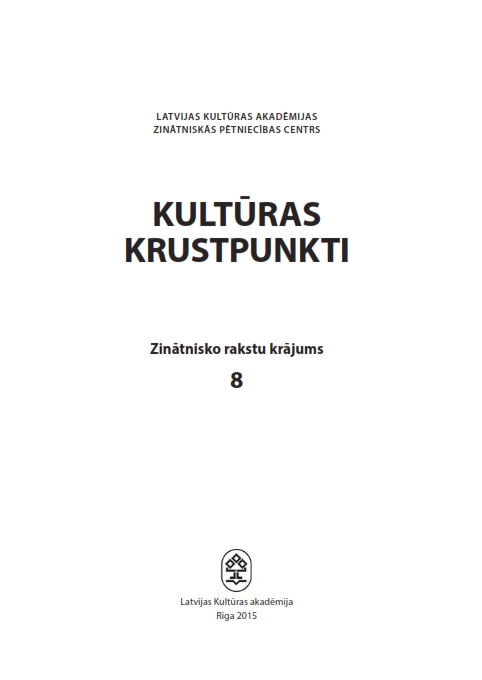LATVIEŠU KREISIE MĀKSLINIEKI, BOĻŠEVISMA MANIFESTĀCIJA UN ĻEBJADKINA POĒZIJA
LATVIAN LEFTIST ARTISTS, MANIFESTATIONS OF BOLSHEVISM AND LEBYADKIN’S POETICS
Author(s): Pēteris KrilovsSubject(s): Cultural history, Aesthetics, Political Philosophy, Political history, Sociology of Culture, Sociology of Politics, History of Art
Published by: Latvijas Kultūras akadēmija
Keywords: artist and power; Latvian leftist artists; manifestations of Bolshevism; Lebyadkin’s politics;
Summary/Abstract: The author of the article draws from his research conclusions made while directing the documentary “Gustavs Klucis. The Deconstruction of an Artist” about the worldfamous avant-garde artist Gustavs Klucis (1895–1938).The contribution examines the chivalric relationship of the artists with the Bolshevik rule over the period from the October Revolution until World War II, from the first revolutionary art education establishments, production units, and exhibitions to detention camps and execution firing ranges. The main research question, “Is the Bolshevik revolution related to the art of avant-garde and constructivism?” The contribution offers a new version about whether and how the conception of new art supported the conception of a radically anti-human political system. The Russian 1917 Bolshevik revolution formed a strange but also natural alliance with art, resulting in the Russian avant-garde artists taking power. If we talk about the way how Latvian artists moved into the area of leftist ideas, it is more likely to be fate than their art or a philosophical trend. However, a third party intruded into this chivalric romance of art and power. The third party was an undereducated and non-creative perception of the world, called cockroach consciousness, which is best represented by Lebyadkin in Fyodor Dostoyevsky’s (Фёдор Достоевский) brilliant novel “Demons” (“Бесы”), which predicts the revolution. The author of this contribution takes a closer look at the role of Latvian artists in creating the attractive features of the Bolshevik revolution and shaping a framework for the repressive system.
Journal: Culture Crossroads
- Issue Year: 8/2015
- Issue No: 2
- Page Range: 162-168
- Page Count: 7
- Language: Latvian

